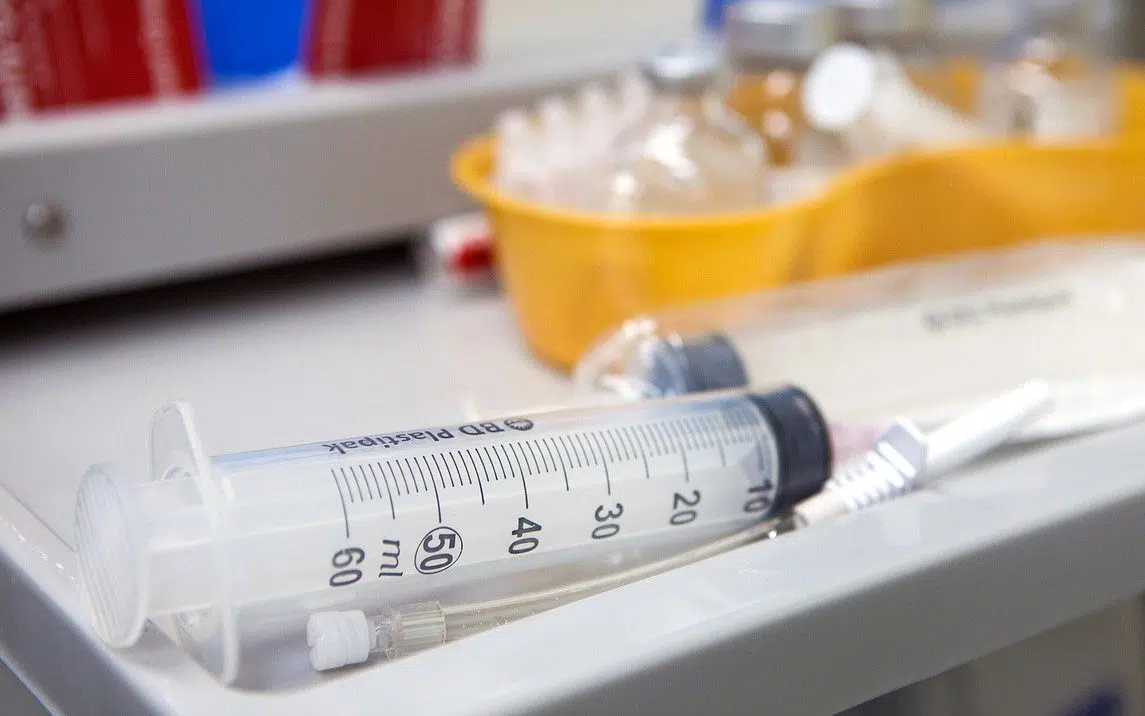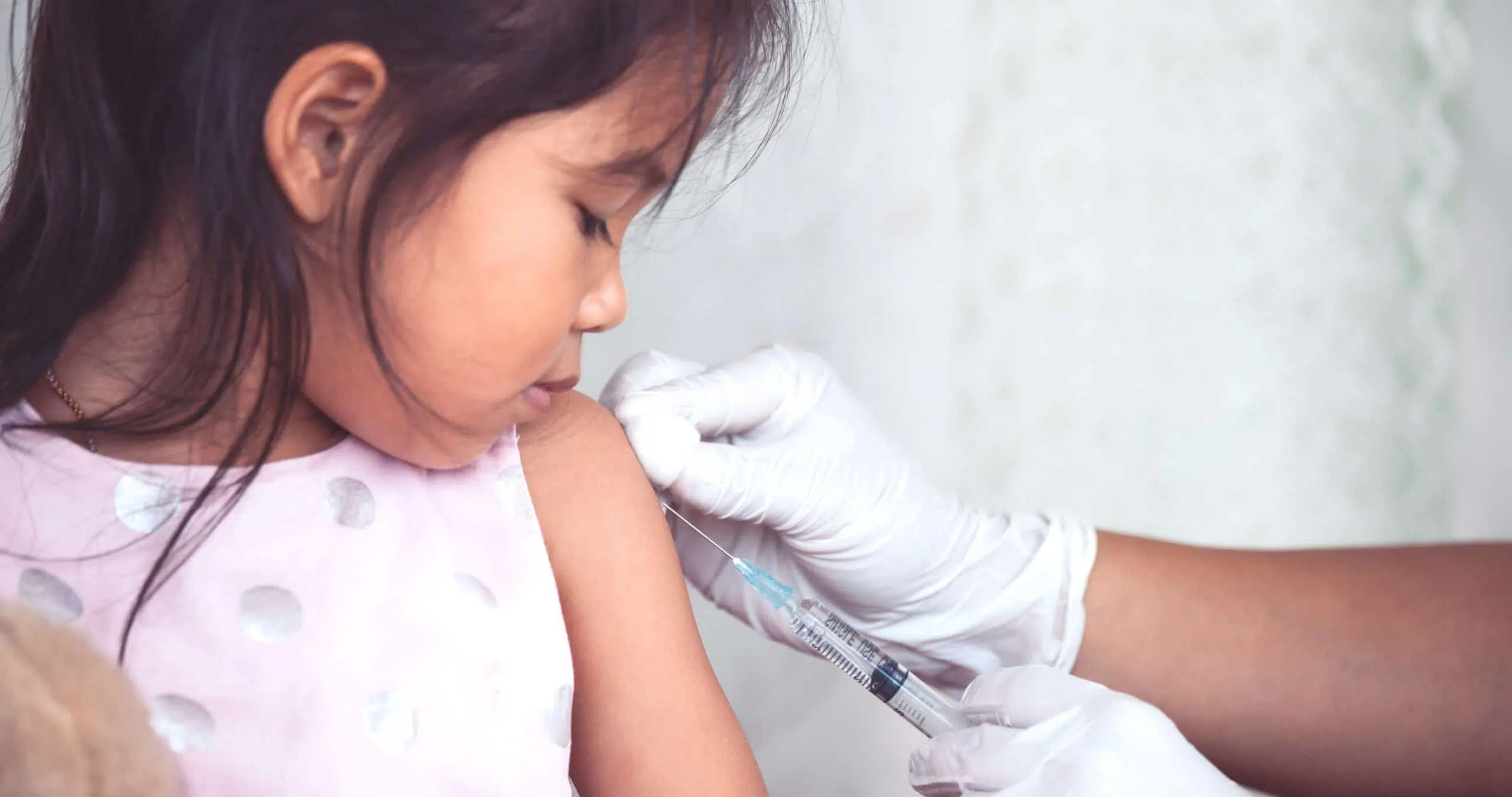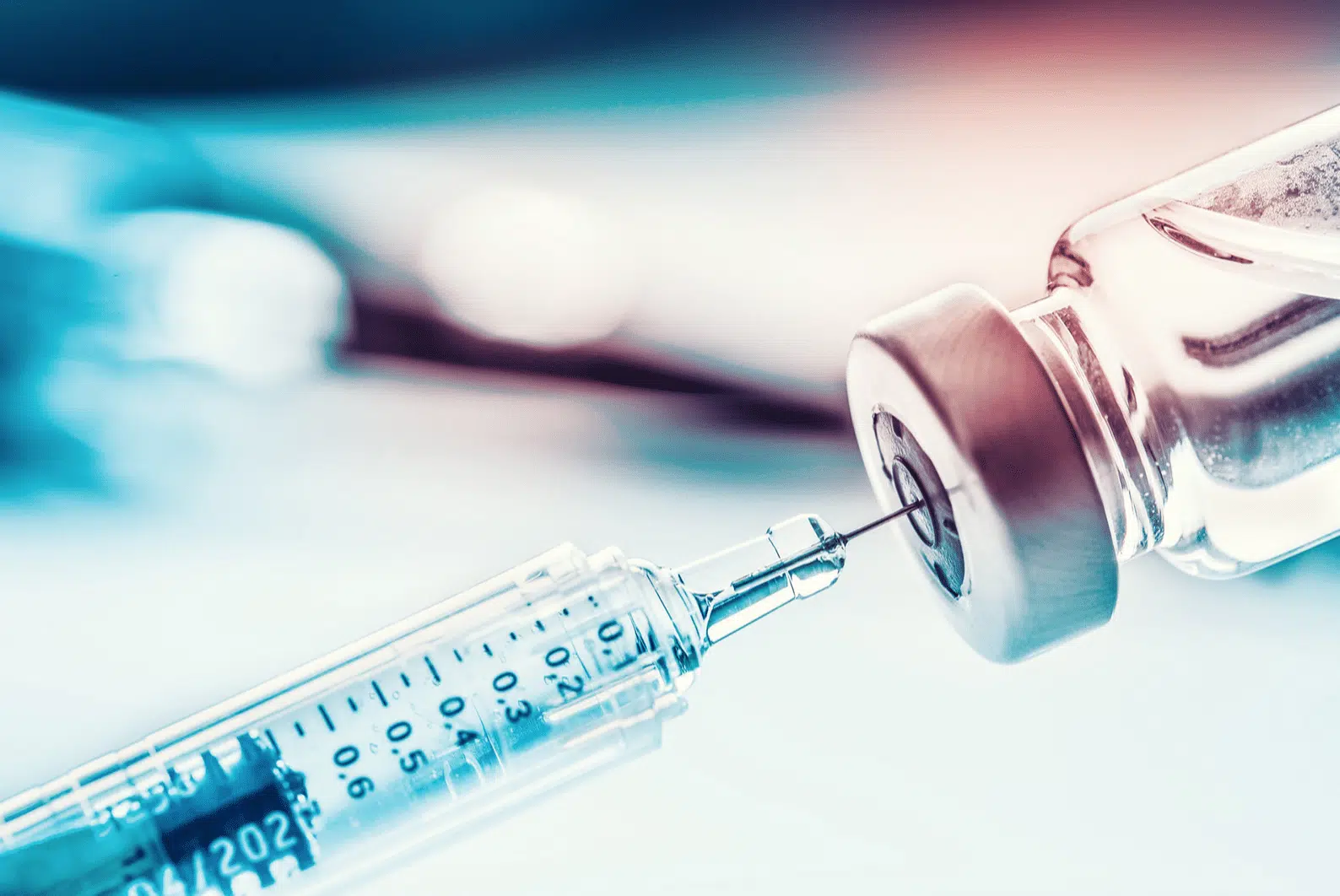How Vaccines Are Produced
All vaccines undergo several stages of development [21] before they are approved for public use by the United States Food and Drug Administration’s (FDA’s) Center for Biologics Evaluation and Research or by the United Nations World Health Organization (WHO). The process begins with the exploratory stage, then proceeds to the pre-clinical stage, clinical development (initial testing, testing on intended target group, and large-scale testing), regulatory review and approval, and finally manufacturing and distribution, always with continuous quality control during the entire sequence.

There are three classes of vaccines in use today that have profound moral implications because some of them use material from aborted preborn children during their testing and manufacturing phases:
- Vaccines which use no fetal tissue during any phase of their development, testing and production. These are always ethical to use.
- Vaccines that used fetal tissue from so-called “immortal” cell lines that were derived from babies which were aborted long ago. These can be used under certain circumstances, as described later in this article.
- Vaccines that use fetal tissue currently obtained from abortion clinics as part of the lucrative market in fetal organs and cells. These are never permissible to use.
COVID-19 Vaccines
First, we must consider the class of vaccines which immunize against COVID-19. As of March 2021, the Charlotte Lozier Institute lists about fifty vaccines of several different types [22] in actual use or undergoing various stages of testing.
About twenty of these vaccines use material from aborted babies during their development, production and testing phases. On the other hand, this means that more than half of the available COVID-19 vaccines do not resort to the use of material from aborted babies at all.
This is a summary of the latest information regarding the ethical suitability of the three classes of COVID-19 vaccines produced in the United States:
Vaccines using no fetal tissue (ethical):
- VLA 2001 (Valneva and Dynavax)
- VSVΔG/V590 (Merck and IAVI)
- KBP-201 (Kentucky BioProcessing)
- Baculovirus plus AS03 (Sanofi and GlaxoSmithKline)
- T-VIVA-19 (Sorrento).
Vaccines using “immortal” fetal cell lines (some cell lines do use fetal tissue in confirmatory lab tests, and some do not):
- UB-612 (COVAXX and United Biomedical)
- mRNA-1273 (Moderna/NIH)
- NVX-CoV2373 (Novavax)
- LUNAR-CoV19/ARCT-021 (Arcturus Therapeutics)
- BNT-162a1,b1,b2,b3,c2 (Pfizer and BioNTech)
- MRT5500 (Sanofi Pasteur and Translate Bio)
- INO-4800 (Inovio Pharma).
Vaccines using “fresh” fetal tissue (unethical):
- AdCOVID (Altimmune)
- AZD1222 (AstraZeneca)
- hAd5 S-Fusion+N-ETSD (ImmunityBio and NantKwest)
- Ad26.COV2-S (Janssen and Johnson & Johnson)
- VXA-CoV2-1 (Vaxart)
- PittCoVacc (University of Pittsburgh)
Other Vaccines
There is also the class of vaccines against other diseases that are produced under the names MRC-5 and WI-38. The latter include Varivax for chickenpox, Meruvax II for rubella (German measles), and Havrix and Vaqta for Hepatitis A.1
The MRC-5 and WI-38 cell lines originated from babies aborted in 1961. Their cells were regenerated by Merck and other corporations and are used in the Varivax and Meruvax II vaccines. These cell lines are technically “immortal,” because technicians can sustain them in a laboratory indefinitely under the proper conditions.2

Our Moral Obligation
There is some confusion today among pro-life people (especially parents) regarding the morality of using vaccines that may have been produced using the tissue of aborted preborn babies.
Currently, there are two particular areas of concern involving vaccines that were tested and/or developed in part using fetal tissue derived from aborted babies who died decades ago and whose tissue is regenerated in laboratories.
In June 2005, the Pontifical Academy for Life published a document entitled Moral Reflections on Vaccines Prepared from Cells Derived from Aborted Human Fetuses [23], which answers most questions that Catholics might have about the morality of using vaccines that are derived from the cell lines of aborted preborn children.
The document recognizes the great value of eradicating diseases that have plagued mankind for millennia, calling this a “milestone” of modern medical technology. The Catholic Church has always supported advances in all areas of medical technology so long as they adhere to moral standards. However, over the past half-century, many morally questionable ― and outright evil ― practices have surfaced. Certain procedures that attempt to derive good from evil acts are ethically murky and create doubt, such as producing lifesaving vaccines from a procedure (abortion) that ends life.
The primary question is: How closely do vaccine users cooperate in the evil of abortion?

There are generally three degrees of cooperation regarding the manufacture, sale and use of vaccines originating with aborted babies.
- To begin with, those who procure tissue from aborted babies to produce a vaccine from it are guilty of formally cooperating in abortion by approving of and taking advantage of the very act of abortion itself. Some current-day tissue collectors cooperate so closely with abortion mills that they are frequently inside the abortuary at the time the abortions are being performed so they can package and preserve the organs immediately. They are as guilty as the boyfriend who pays for the abortion, the friend who drives her to the abortion mill, or the abortionist who performs the actual procedure.
- Somewhat removed from this direct cooperation in abortion are those who market, advertise and distribute the resulting vaccines. But these activities are also morally illicit, because they “could contribute in encouraging the performance of other voluntary abortions, with the purpose of producing such vaccines” (Moral Reflections, Section 6).
- Finally, there are the doctors and patients who use these vaccines, even though they know about their origin. They are permitted to use the vaccines when no alternative is available, in order to avoid “significant risks to their health” and “indirectly the [health of the] population as a whole.” However, this causes the “moral coercion of the conscience of parents, who are forced to choose to act against their conscience or otherwise to put the health of their children and of the population as a whole at risk. This is an unjust alternative choice, which must be eliminated as soon as possible” (Moral Reflections, Summary).
The document Moral Reflections describes our moral duty to do more than just passively resist evil; we must actively fight it. We are all obliged to “oppose by all means the vaccines which do not yet have morally acceptable alternatives, creating pressure so that alternative vaccines are prepared.”
Father Tadeusz Pacholczyk, Director of Education for the National Catholic Bioethics Center, gives us some guidance on what specific actions we can take. He says that parents can
…ask their health-care providers for accurate information detailing whether particular vaccines were developed using cell lines of illicit origin. This engages the health-care profession in a discussion that it very much needs to become party to. Parents can make known their disagreement by writing to the pharmaceutical companies that manufacture the vaccines.3

The Ethical “Bottom Line”
In summary, conscientious pro-lifers are forced to weigh their own children’s health against participating in an illicit and immoral procedure that has already killed preborn children. This question is more prominent now than it ever has been before, what with the spread of COVID-19 and urgent calls for mandatory universal vaccination. Dignitas Personae [24] makes the ethical course of action clear:
Therefore, it needs to be stated that there is a duty to refuse to use such “biological material” even when there is no close connection between the researcher and the actions of those who performed [the abortion]. This duty springs from the necessity to remove oneself, within the area of one’s own research, from a gravely unjust legal situation and to affirm with clarity the value of human life. (Dignitas Personae ¶35, emphasis in the original)
Fortunately, we also have the expert opinion of the National Catholic Bioethics Center, which confirms the guidelines in Dignitas Personae:
In addition, the use of these cell lines, even for the laudable purpose of a COVID-19 vaccine, is a cause of serious theological scandal. Appealing to good aims and an “urgent need” will foster the deeper penetration of unethical research and development into medicine, politics, law, and culture. Dignitas Personae warns against this: “Any appearance of acceptance would in fact contribute to the growing indifference to, if not the approval of, such actions in certain medical and political circles.” (Dignitas Personae ¶35).4
In summary, then, we must keep in mind that there are vaccines available against COVID-19 and other diseases that are not produced with the use of aborted fetal material. There is no moral obstacle to using such vaccines.
However, if an ethical alternative is simply not available, it is up to the individual to use his or her conscience [25] and weigh the benefits against the costs of using such a vaccine. It is entirely permissible to reject the use of a vaccine that is developed, tested or manufactured with the use of material from aborted babies. No civil or church authority has the moral power to compel us to accept a vaccine, although recent developments seem to indicate that many “progressives” favor forcible vaccination of religious people against COVID-19.
In any case, whether or not we receive a vaccine that depends upon aborted babies, we must continue to speak out forcefully against the practice of manufacturing and using vaccines of any type with illicit origins.
Sources of Current Information
Anyone wishing to be more informed on the complex issue of vaccinations can refer to several reliable pro-life sources. For technical information, see the website of the organization Children of God for Life [26], which was founded by Debi Vinnedge in 1999. Then there is AVM Biotechnology [27], founded in 2008 by Dr. Theresa Deisher, who holds 23 biotechnology patents.
For the opinions of leading Catholic bioethicists, see the website of the National Catholic Bioethics Center [28].
A general list of licit and illicit vaccines is published in card form and on the Internet by the Sound Choice Pharmaceutical Institute.

Two publications that deal directly with COVID-19 vaccines:
- Congregation for the Doctrine of the Faith. “Note on the Morality of Using Some Anti-COVID-19 Vaccines [29].” December 21, 2020.
- National Catholic Bioethics Center. “Points to Consider on COVID-19 Vaccines and Abortion-Derived Cell Lines [30].” March 30, 2021.
Moral Alternatives to Aborted Fetal Vaccines
COVID-19
- AG0301-COVID19 and AG0302-COVID19 [Japan]
- BBIBP-CorV [China]
- BBV152 [India]
- COVAXIN [India]
- CVnCoV [Germany]
- IIBR-100 [Israel]
- New Crown COVID-19 [China]
- SARS-CoV-2 [China]
- T-VIVA-19 [USA]
- ZyCov-D [India]
Hepatitis B
- Recombivax HB (Merck) and Engerix B (GSK)
Polio
- IPOL (Sanofi)
- IPOL+Any DTaP (GSK, Sanofi)
- ImovaxPolio (Sanofi)*
- InfanrixHexa–Polio+HiB (GSK)
- Pediacel–Polio+DTaP+HiB (Sanofi)
- Pediatrix–Polio+DTaP+Hepatitis-B (Sanofi)
Rabies
- RabAvert (Chiron/Novartis)
Vaccines with Aborted Fetal Tissue
Chickenpox/Varicella
- Varivax (Merck)
Chickenpox+MMR
- ProQuad (Merck)
COVID-19
- COV2-S (Janssen/Johnson & Johnson)
- AdCOVID (Altimmune)
- AZD1222 (AstraZeneca)
- Ad5-nCoV (CanSino)
- ChAdOX1nCoV-19 (AstraZeneca)
- Gam-COVID-Vac (Gamaleya)
- hAd5 S-Fusion + NETSD (ImmunityBio)
- PittCoVacc (University of Pittsburgh)
- Sputnik V (Gamaleya)
- V591/TMV-083 (Institut Pasteur/Themis/Merck)
- VXA-CoV2-1 (Vaxart)
Hepatitis A
- Vaqta (Merck)
- Havrix (GSK)
- Twinrix–Hepatitis A+B (GSK)
Measles, Mumps, and Rubella (MMR)
- MMR II (Merck)
Polio
- Poliovax (Sanofi)
- Pentacel–Polio+DTaP+HiB (Sanofi)
Rabies
- Imovax (Sanofi)*
Shingles
- Zostavax (Merck)
*ImovaxPolio [moral] is for polio, and Imovax [aborted fetal material] is for rabies.
+ Endnotes
[1] Vaccines that use the human cell line WI-38, derived from aborted preborn children, include the following:
- Rubella vaccines Meruvax© (Merck), Rudivax© (Sanofi Pasteur, France), and Ervevax© (RA 27/3) (GlaxoSmithKline, Belgium)
- Rubella/measles vaccines M-R-VAX© (Merck) and Rudi-Rouvax© (AVP, France)
- Rubella/mumps vaccine Biavax© (Merck)
- Measles/mumps/rubella (MMR) vaccines M-M-R© II (Merck), R.O.R.© and Trimovax© (Sanofi Pasteur, France), and Priorix© (GlaxoSmithKline, Belgium)
Vaccines that use the human cell line MRC-5, also derived from aborted preborn children, include the following:
- Hepatitis A vaccines VAQTA (Merck) and HAVRIX (GlaxoSmithKline)
- Chicken pox vaccine Varivax© (Merck) (also uses WI-38)
- Poliomyelitis vaccine Poliovax© (Aventis-Pasteur, France)
- Rabies vaccine Imovax© (Aventis-Pasteur, France)
- Smallpox vaccine AC AM 1000 (Acambis)
[2] Experimental Cell Research 37:614-636, 1965; Nature 227:168-170, 1970; May 10, 1995 press release entitled “Aborted Babies Used as Source for Rubella Vaccine.” Ohio Parents for Vaccine Safety.
[3] J.J. Ziegler. “Dignitas Personae and Childhood Vaccinations.” Catholic World Report, May 14, 2011.
[4] National Catholic Bioethics Center. “COVID-19 Vaccines: Promote Life and Health Without Undermining Human Dignity.” April 8, 2020.